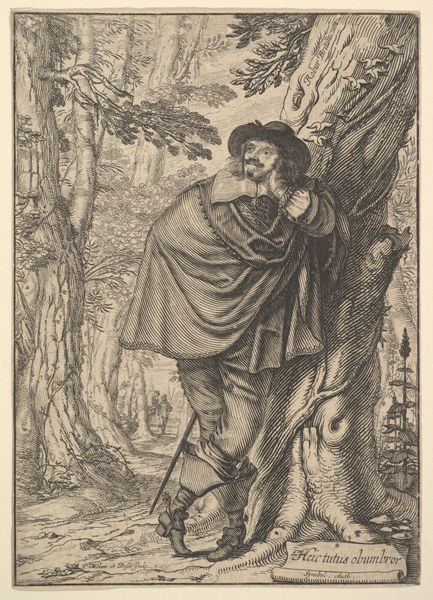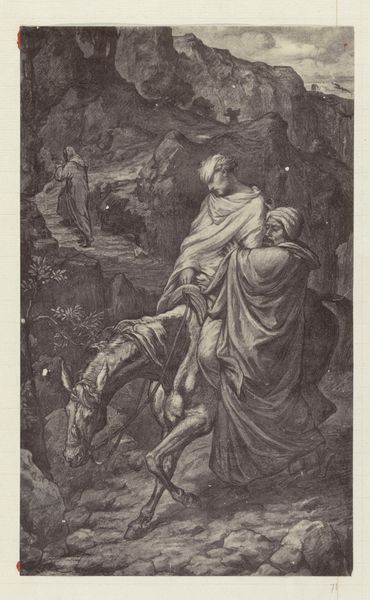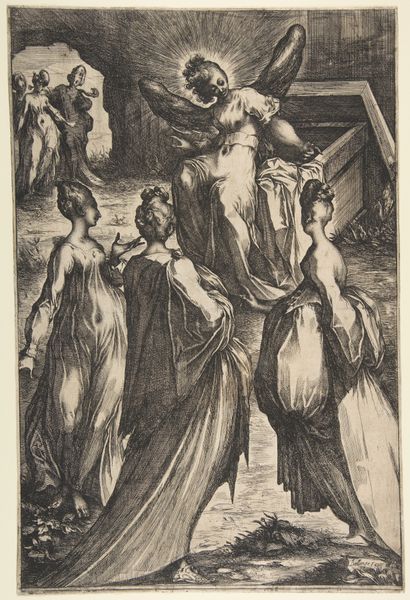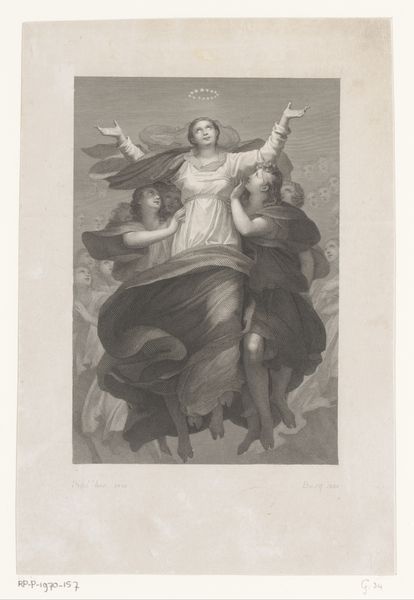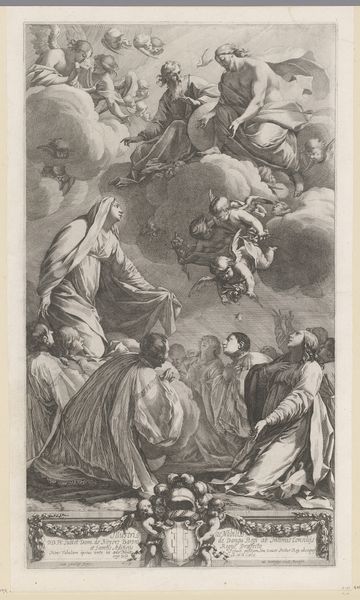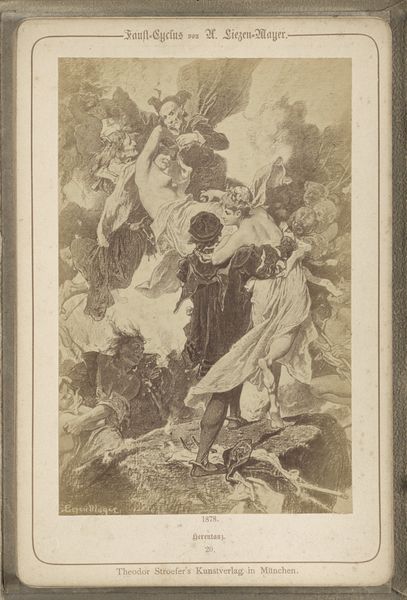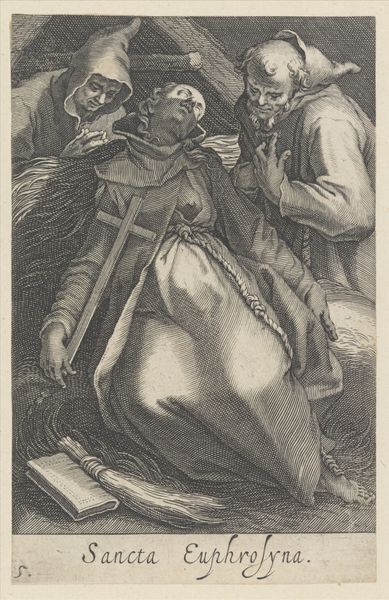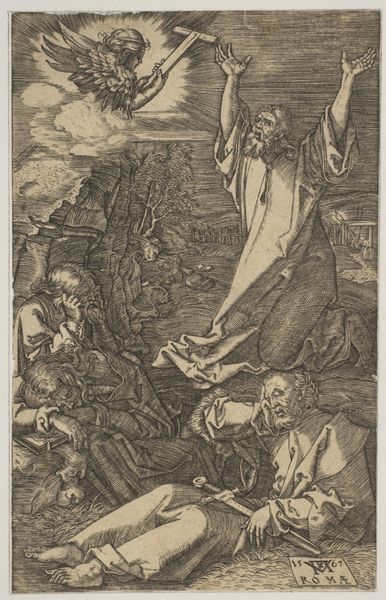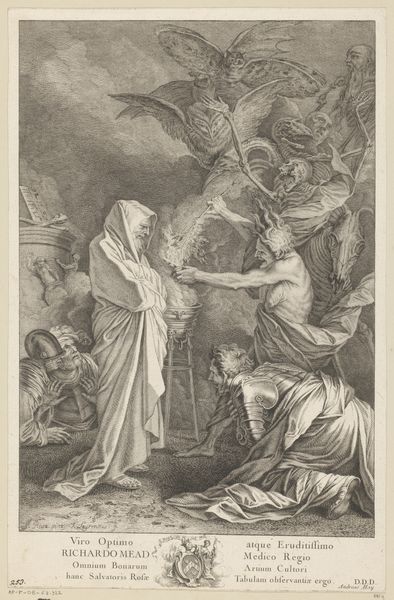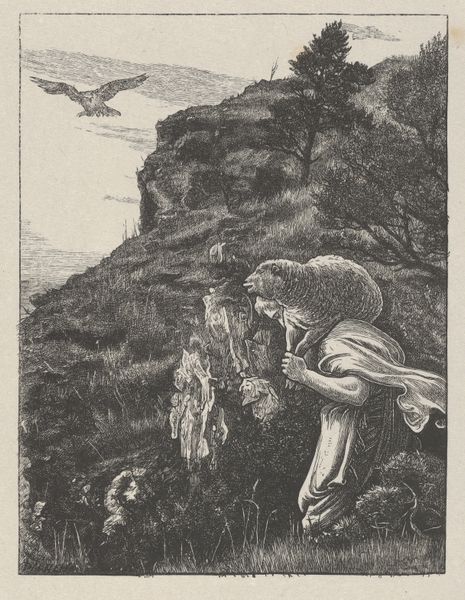
Miriam, from "Dalziels' Bible Gallery" 1864 - 1881
0:00
0:00
drawing, print, engraving
#
drawing
#
narrative-art
# print
#
figuration
#
men
#
history-painting
#
engraving
Dimensions: Image: 8 15/16 × 6 5/8 in. (22.7 × 16.8 cm) India sheet: 11 1/8 × 8 9/16 in. (28.2 × 21.7 cm) Mount: 16 7/16 in. × 12 15/16 in. (41.8 × 32.8 cm)
Copyright: Public Domain
Curator: This is Miriam, an engraving made between 1864 and 1881. It's from a series called "Dalziels' Bible Gallery", based on the art of Edward John Poynter. Editor: My first thought? That's pure, unadulterated power! Look at the way she dominates the composition. There’s a force in that movement; you can practically hear the tambourine. Curator: The tambourine is key; it's an emblem of victory. In the biblical narrative, Miriam leads the Israelite women in dance and song after crossing the Red Sea, celebrating their escape from Egyptian bondage. The image connects to freedom and leadership. Editor: Exactly! And what's compelling is that this scene foregrounds women's agency in what is usually read as a masculine military victory. Miriam becomes a powerful symbol of liberation, a figure resisting oppression. How interesting to visualize this aspect of biblical history. Curator: Note how Poynter renders her garb, heavy folds in movement. It suggests both physical action and spiritual transcendence. And there's this idea of inherited ritual through musical instruments. It builds this communal cultural memory, that passes from one generation to the next. Editor: And what does it say, that in the original story, and therefore in this rendering, that artistic expression - music and dance - becomes inextricably linked with resistance? It offers a crucial framework to understanding the social and political power that can arise from what some dismiss as mere ‘art’. Curator: Perhaps for contemporary eyes the level of ornamentation—her necklace, armband, elaborate dress— distract from the broader ideas of protest. The composition and details are heavily reminiscent of Orientalist depictions of biblical times. Editor: Yes, it must be situated within its own era and the visual languages of 19th century. Yet it can be simultaneously analyzed beyond this restrictive Western lens. Look at her direct gaze. Think of this as resistance literature—or visual resistance—aimed at dismantling patriarchal structures. Curator: To think that a print like this, from over a century ago, can invite a deeper dive into discussions around feminine agency, oppression, power dynamics, and visual culture, it really demonstrates that iconic symbols resonate across time. Editor: Absolutely, a single image becomes an incredible locus of social commentary, encouraging us to reimagine historical events through a powerful, feminist lens.
Comments
No comments
Be the first to comment and join the conversation on the ultimate creative platform.
